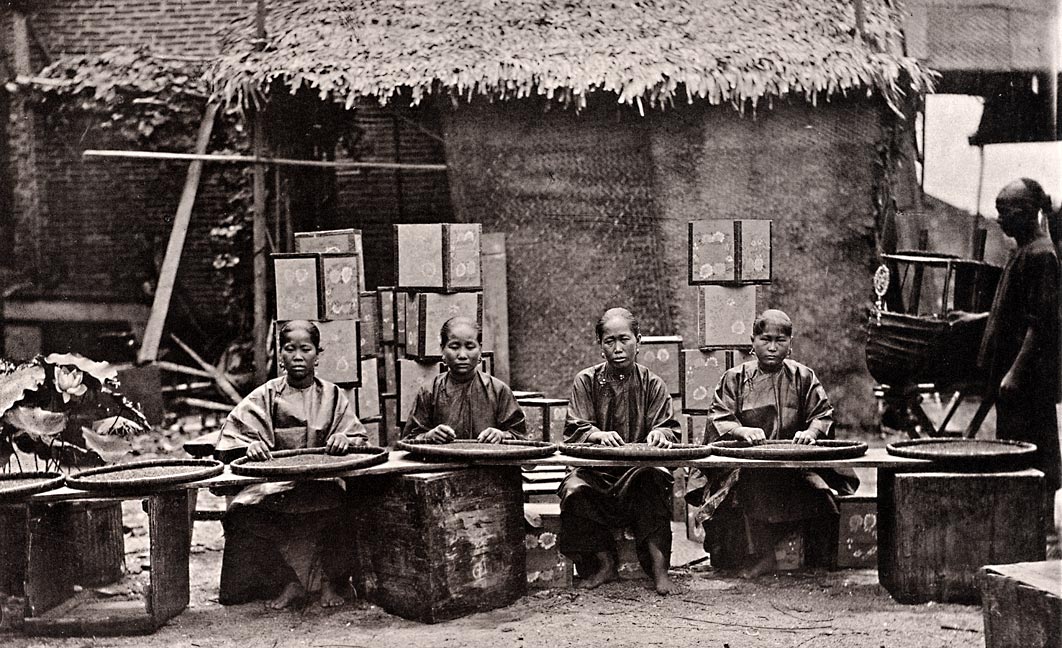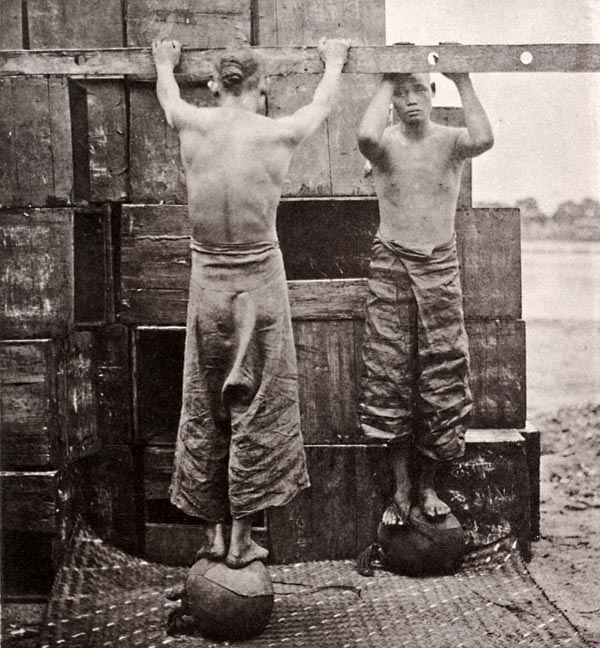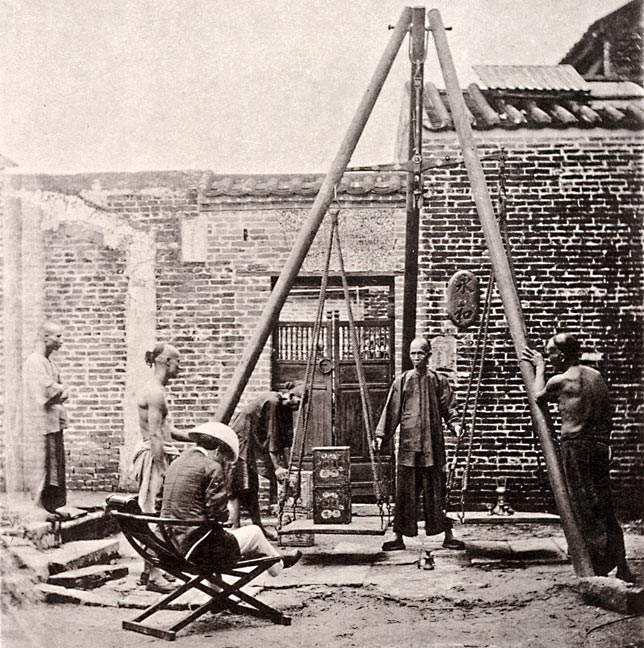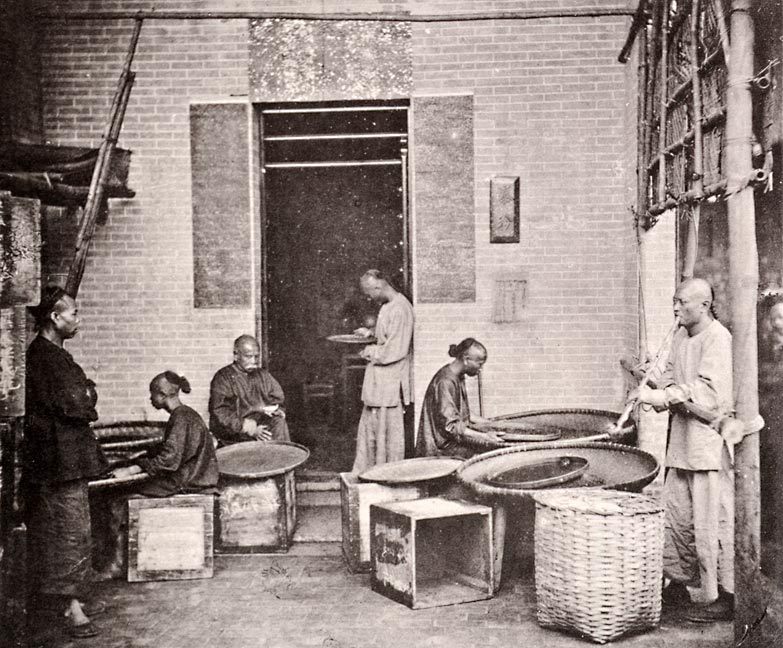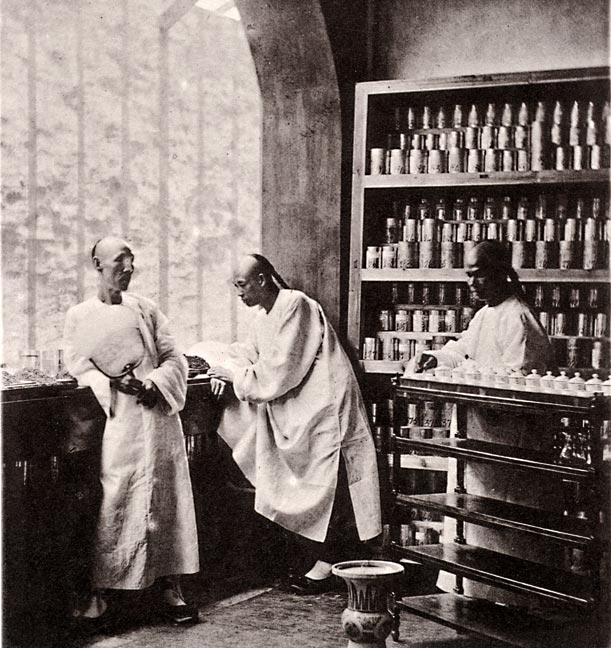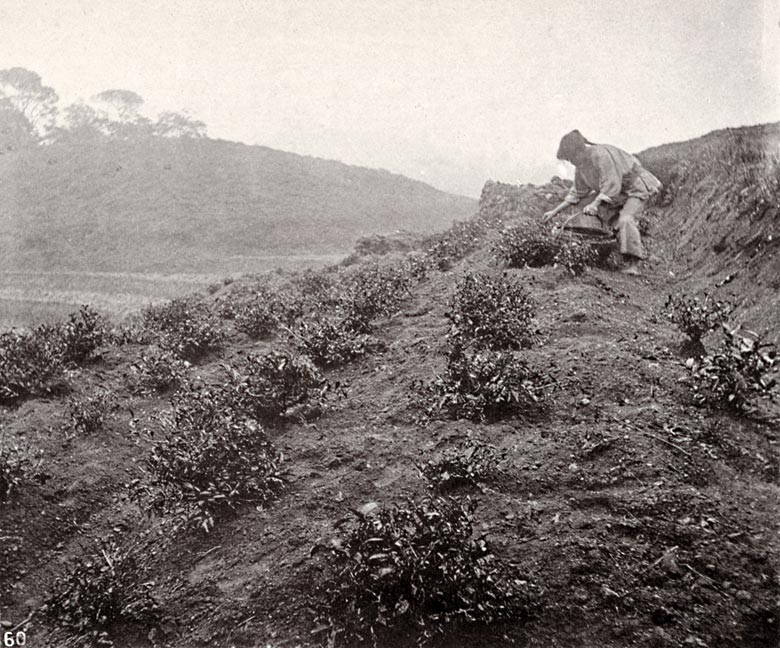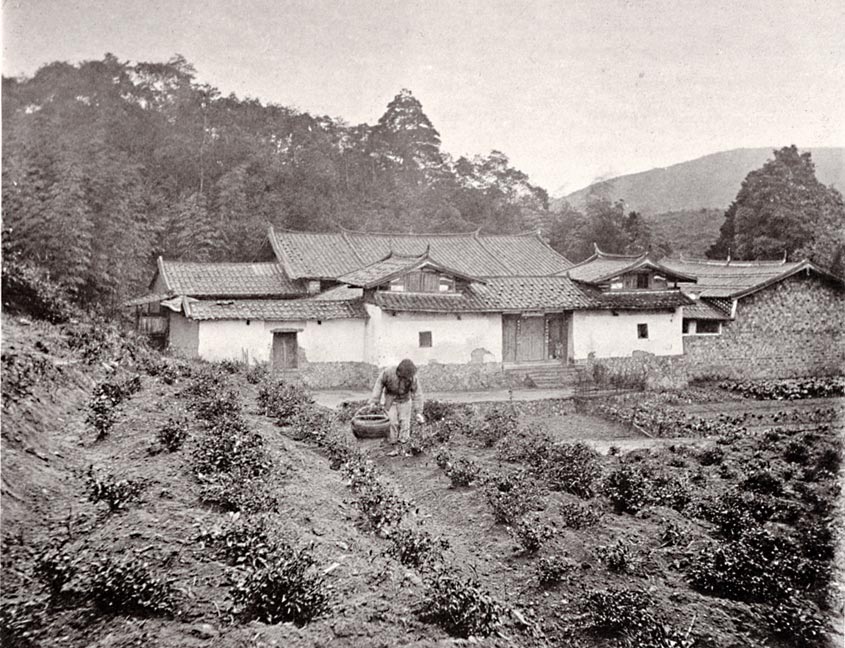“From the leaf of the Tai-shan plantations, which are the most noted in that neighbourhood, the ‘Canton District Congou,’ and the ‘Long Leaf-Scented Orange Pekoe,’ are manufactured. These teas are prepared by twisting the leaf in the hand; when so twisted it frequently shows a small white feathery tip at the end of the leaf, known as the ‘Pekoe tip.’“
“Tea Picking in Canton,” plate XIX, volume 1 (detail)
ct1084 (caption) ct1085 (photo)
“The manipulation required to produce Gunpowder Tea is one of the most curious and interesting of all the processes to which the leaf is submitted. The visitor... is surprised to find a number of able-bodied coolies, each dressed in a short pair of cotton drawers, tucked up so as to give free action to the naked limbs.“
“Rolling Scented Caper and Gunpowder Teas,” plate XXI, volume 1 (detail)
ct1089 (caption) ct1092 (photo)
“When the market is about to open, the new teas are sorted out into qualities, or ‘chops,” as they are usually termed. Samples of these assorted teas are then submitted to the foreign merchants who carefully test the colour, size, make, taste and smell of the leaves, and their general appearance, wet and dry.“
“Weighing Tea for Exportation,” plate XXI, volume 1 (detail)
ct1089 (caption) ct1093 (photo)
“A number of men may be seen during the tea season in the front of the house, employed ... in picking, sampling, and sorting the tea, or in preparing the chests for its reception. Just within the entrance are one or two offices ... while, out of doors, are a number of forms and chairs, and a small table bespread with hot tea and cups, set in readiness for the accommodation of visitors.“
“A Tea House, Canton,” plate XXI, volume 1 (detail)
ct1090 (caption) ct1094 (photo)
“This photograph represents two Chinese tea merchants in a foreign taster’s room, awaiting an offer for their samples. Every foreign house in Canton that does any trade in tea has a room specially fitted up for the accommodation of the taster.“
“A Tea-tasting Room, Canton,” plate XXI, volume 1 (detail)
ct1090 (caption) ct1095 (photo)
“The tea plants are reared from seed sown in a nursery, and when they are sufficiently matured, the finest of them are selected, and planted out in rows about four feet apart, a like interval being left between each of the plants, so that every clump enjoys an equal share of soil and sunshine.“
“The Tea Plant,” plate XXIV, volume 2, no. 60 and no. 61
ct2096 (caption) ct2099 and ct 2100 (photo)
